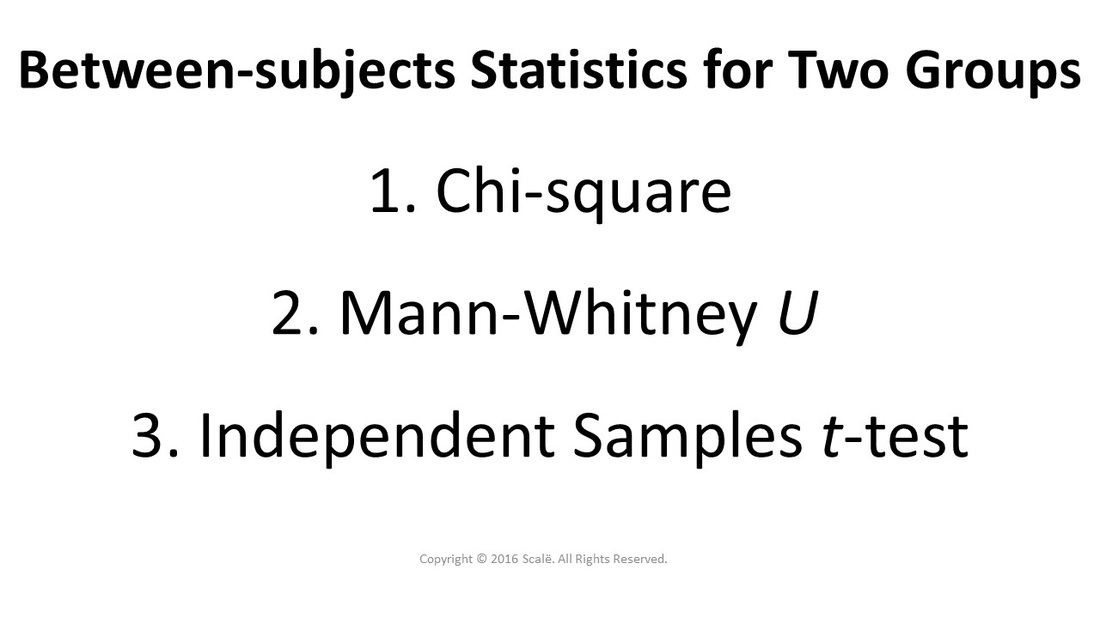Between-subjects statistics for two groups
Between-subjects statistics are used to compare two independent groups on an outcome
Between-subjects statistics for two groups are used to compare two independent groups on an outcome. The choice of between-subjects statistical test for two groups depends upon meeting statistical assumptions and the scale of measurement of the outcome.
For categorical outcomes and two groups, researchers calculate the odds ratio for having an outcome.
With ordinal outcomes, researchers compare the medians and interquartile ranges of two independent groups to see if there is a statistically significant difference.
When continuous outcomes are used with two groups, researchers have to meet the statistical assumptions of independence of observations, normality, and homogeneity of variance in order to compare the means and standard deviations between groups.
If the statistical assumptions are not met for between-subjects statistics for two groups, then researchers can use non-parametric statistics to compare independent groups on a continuous outcome.
For categorical outcomes and two groups, researchers calculate the odds ratio for having an outcome.
With ordinal outcomes, researchers compare the medians and interquartile ranges of two independent groups to see if there is a statistically significant difference.
When continuous outcomes are used with two groups, researchers have to meet the statistical assumptions of independence of observations, normality, and homogeneity of variance in order to compare the means and standard deviations between groups.
If the statistical assumptions are not met for between-subjects statistics for two groups, then researchers can use non-parametric statistics to compare independent groups on a continuous outcome.
What is the scale of measurement for the outcome in the between-subjects analysis?
The outcome represents numerical designations or categorical values that describe events or group membership.
The outcome variable is measured using an ordered numerical continuum, such as a Likert scale.
The outcome variable is an actual number that provides both a measure of distance and magnitude due to having a "true zero."
Statistician For Hire
DO YOU NEED TO HIRE A STATISTICIAN?
Eric Heidel, Ph.D. will provide statistical consulting for your research study at $100/hour. Secure checkout is available with PayPal, Stripe, Venmo, and Zelle.
- Statistical Analysis
- Sample Size Calculations
- Diagnostic Testing and Epidemiological Calculations
- Psychometrics

